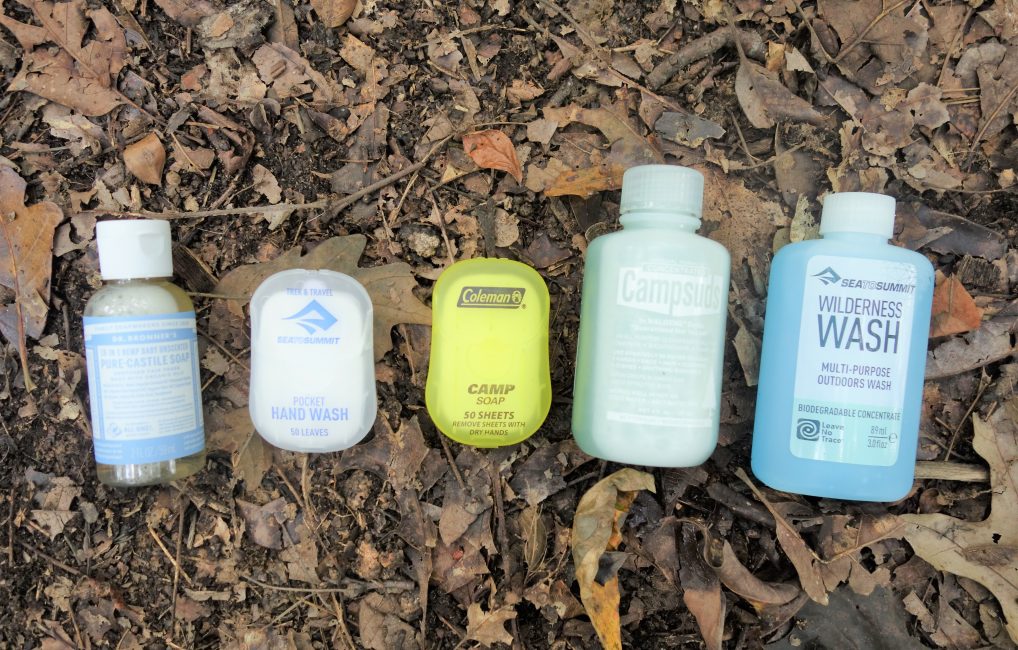I. Introduction

Camping, an adventure into the great outdoors, offers a respite from the hustle and bustle of everyday life. While connecting with nature is invigorating, maintaining personal hygiene in the wilderness can be a challenge. This is where camp soap, a small but essential item, comes into play. In this article, we'll explore the evolution of camp soap, from its humble beginnings to its modern iterations, highlighting its significance in outdoor hygiene.
II. The Origins of Camp Soap
Early Camp Hygiene Practices

Long before the convenience of modern soap, early campers relied on rudimentary methods to stay clean. These methods often involved natural elements like water, sand, or even leaves for scrubbing. Personal hygiene was a formidable challenge in the wild.
The Emergence of Soap Making in Camps
The transition from primitive cleaning methods to soap making within camps marked a significant shift in the history of outdoor hygiene. Campers began to experiment with ingredients found in their surroundings to create soap, laying the groundwork for the camp soap we know today.
III. Ancient Camp Soap Ingredients

Tallow and Animal Fats
In ancient times, camp soap recipes typically revolved around readily available ingredients like tallow, a form of animal fat. Tallow-based soaps were effective but not always pleasant-smelling.
Ashes and Lye as Alkaline Agents
Ashes from campfires, when combined with water, created lye, a crucial alkaline agent in soap-making. Campers discovered that mixing this lye with fats resulted in soap, despite its somewhat caustic nature.
IV. Camp Soap in Medieval Times

Castile Soap: A Pioneer in Camp Soap
During the Middle Ages, Castile soap, made primarily from olive oil, gained prominence. While it was a luxury item for many, some fortunate campers enjoyed the benefits of this superior soap.
Soap in Medieval Camps: A Luxurious Rarity
For the majority of medieval campers, soap remained a rare commodity. Maintaining hygiene in camps often meant relying on water sources for washing, which presented its own set of challenges.
V. The Industrial Revolution and Camp Soap

Mass Production and Accessibility
The Industrial Revolution brought about a transformation in soap production. Soap, once a luxury, became more accessible to the masses, including campers, as factories churned out mass quantities of this essential item.
The Impact on Camping Hygiene
With the advent of mass-produced soap, camping hygiene underwent a revolution of its own. Campers could now pack portable soap bars, drastically improving their cleanliness during outdoor excursions.
VI. Modern Camp Soap Formulations

Ingredients Today: Natural vs. Synthetic
Modern camp soaps come in a variety of formulations. Some campers prefer natural, organic ingredients, while others opt for synthetically produced soaps that often include moisturizers and fragrances.
Specialized Soaps for Different Camping Needs
As camping evolved into various forms such as backpacking, car camping, and RV travel, camp soap formulations adapted to meet specific needs. There are now specialized soaps designed for each type of camping experience.
VII. Camp Soap Types and Varieties

Bar Soap vs. Liquid Soap
The eternal debate of bar soap versus liquid soap extends to the camping world. Each has its advantages and drawbacks, and campers often have strong preferences based on their camping style.
Biodegradable and Environmentally Friendly Options
In an era of increasing environmental awareness, many campers prioritize eco-friendly soaps that have minimal impact on the natural surroundings. Biodegradable camp soap options have gained popularity for their minimal ecological footprint.
VIII. The Science of Cleaning with Camp Soap

The Role of Surfactants
To understand how camp soap works, it's essential to delve into the science of surfactants. These molecules play a pivotal role in removing dirt and germs from the skin and other surfaces.
How Soap Removes Dirt and Germs
Soap's unique molecular structure allows it to interact with both water and oil, enabling it to lift away dirt and microorganisms from surfaces. This simple yet effective process is fundamental to camp soap's cleaning power.
IX. Proper Camp Soap Usage

Techniques for Effective Cleaning
While camp soap is a powerful cleaning tool, using it effectively requires proper techniques. Campers should understand the best practices for lathering up and rinsing off in various camping scenarios.
Camp Soap Storage and Preservation
Ensuring that your camp soap remains usable throughout your adventure involves proper storage and preservation techniques. Extreme temperatures and moisture can impact soap quality.
X. The Evolution of Camp Soap Packaging

Compact and Portable Options
The packaging of camp soap has also evolved. Campers can now choose from compact, space-saving options that are ideal for backpackers and minimalist travelers.
Innovations in Packaging Design
From its humble beginnings, camp soap packaging has evolved significantly. Innovations like dispensing mechanisms and resealable containers have enhanced its convenience, making it easier to use on outdoor adventures. Dispensing mechanisms allow for precise soap portions, reducing waste and mess, while resealable containers keep soap fresh and prevent leaks. Notably, resin sugar tubes, as seen in products like NOWATA Soap, represent a leap towards eco-consciousness. Crafted from biodegradable materials, these tubes protect both the soap and the environment, embodying the evolution of camp soap packaging towards practicality, convenience, and eco-friendliness.
XI. Camp Soap in Extreme Conditions

Camp Soap in Cold Weather
Camping in frigid temperatures presents unique challenges for camp soap usage. Special formulations and precautions are necessary to prevent soap from freezing.
Camp Soap for Backpackers and Ultralight Camping
In the realm of backpacking and ultralight camping, where every ounce counts, camp soap choices have evolved to cater to these discerning adventurers. From featherlight soap bars to concentrated liquids, the market now offers solutions that ensure cleanliness without burdening your pack. Among these options is NOWATA Soap, a no-rinse soap that's changing the game. This innovative soap not only shaves off weight but also conserves precious water, making it ideal for arid environments and eco-conscious campers. So, as you gear up for your next outdoor escapade, know that camp soap innovation, with NOWATA Soap at the forefront, keeps you clean without adding weight or compromising the environment.
XII. DIY Camp Soap Recipes

Crafting Your Own Camp Soap
For the adventurous and DIY-inclined camper, creating homemade camp soap can be a rewarding experience. Various recipes cater to different preferences and needs.
Safety and Sustainability Considerations
While making your own camp soap can be eco-friendly and cost-effective, it's essential to prioritize safety and environmental responsibility when selecting ingredients and crafting your soap.
XIII. Camp Soap and Leave No Trace Principles

Minimizing Environmental Impact
Leave No Trace principles emphasize responsible outdoor ethics, including minimizing your environmental impact. Camp soap users must be conscientious about soap and water disposal.
Soap and Water Disposal in the Wilderness
Preserving Pristine Environments In the realm of responsible camping and outdoor ethics, understanding how to handle camp soap and wastewater is crucial for minimizing our environmental impact. To protect fragile ecosystems and adhere to Leave No Trace principles, campers should use biodegradable, phosphate-free options like NOWATA Soap, which requires no rinsing. This innovative soap allows for effective cleaning while conserving water and leaving minimal environmental impact. By choosing products like NOWATA Soap, campers can enjoy the wilderness responsibly, maintaining its pristine beauty and reducing their footprint on the environment.
XIV. Camp Soap Alternatives

Waterless Hand Cleansers
In situations where water is scarce, or minimal cleanup is needed, waterless hand cleansers serve as a convenient alternative to traditional camp soap.
Natural Cleansing Agents Found in Nature
Resourceful campers can often find natural cleansing agents in the wilderness, such as certain plants and rocks, that can aid in personal hygiene.
XV. Camp Soap for Hygiene Beyond the Body

Cleaning Cookware and Utensils
Camp soap isn't just for personal hygiene. It's also indispensable for keeping camp cookware and utensils clean, ensuring safe and enjoyable meals.
Maintaining Camping Gear
Camping gear, including tents, sleeping bags, and hiking boots, benefits from occasional cleaning with camp soap to extend its lifespan and functionality.
XVI. Camp Soap in Cultural and Expeditionary Expeditions

Historical Use in Exploration
Throughout history, camp soap played a vital role in expeditions and exploration, where hygiene was crucial for survival in uncharted territories.
Modern Expeditions and Their Hygiene Practices
Even in contemporary expeditionary ventures, camp soap remains an indispensable companion for explorers in remote regions, where access to modern amenities is limited.
XVII. Camp Soap in Popular Culture

Representations in Movies and Literature
Camp soap has made its way into popular culture, often depicted as a symbol of outdoor adventure and self-sufficiency in movies, books, and television shows.
Camp Soap as a Symbol of Outdoor Adventure
The presence of camp soap in popular culture reflects its enduring association with the spirit of outdoor exploration and self-reliance.
XVIII. Challenges in Camp Soap Marketing

Greenwashing and Eco-Friendly Claims
As consumer demand for eco-friendly products rises, some camp soap brands make misleading claims. Identifying genuinely sustainable options can be challenging.
The Balance Between Effectiveness and Sustainability
Campers must strike a balance between the effectiveness of a soap product and its environmental impact, making informed choices based on their priorities.
XIX. The Future of Camp Soap

Innovations in Sustainable Packaging
In a world increasingly concerned with environmental issues, the future of camp soap hinges on groundbreaking innovations in packaging that not only mitigate waste but also significantly reduce environmental impact. At the forefront of this sustainable revolution, our soap stands out as a shining example, thanks to its ingenious use of sugar resin tubes. While many are striving to make a difference, our packaging truly leads the way in minimizing harm to the planet.
New Ingredients and Formulations
Expect to see advancements in camp soap ingredients and formulations that cater to the evolving needs and preferences of outdoor enthusiasts.
XX. Conclusion

Camp soap, a seemingly small accessory in the world of camping, holds a rich history and an essential role in maintaining hygiene during outdoor adventures. As camping techniques and environmental awareness continue to evolve, so too will the humble camp soap, ensuring that future generations of campers can enjoy the great outdoors with cleanliness and confidence.


